The title is about the only thing complicated with this grow machine.
After watching a guy name Heath Robinson grow 40 oz plants and then grow a number of small clones using recirculating dwc methods I decided to build a very small machine to see if this method of growing suits me. So back in October of last year I put together a few pieces of 4 inch pvc tubes, 3 tubes are 12 inches long and the 4th is 24 inches long with 3 90 degree bends and capped one end. The size and shape of the machine doesn't matter as long as the tubes are level with each other. After the pvc was cemented together I drilled 4 holes with a 2 and3/4inch hole saw. I went with that size because I first tried a 3 inch hole saw and the fit for the 3 inch pot net seemed loose.
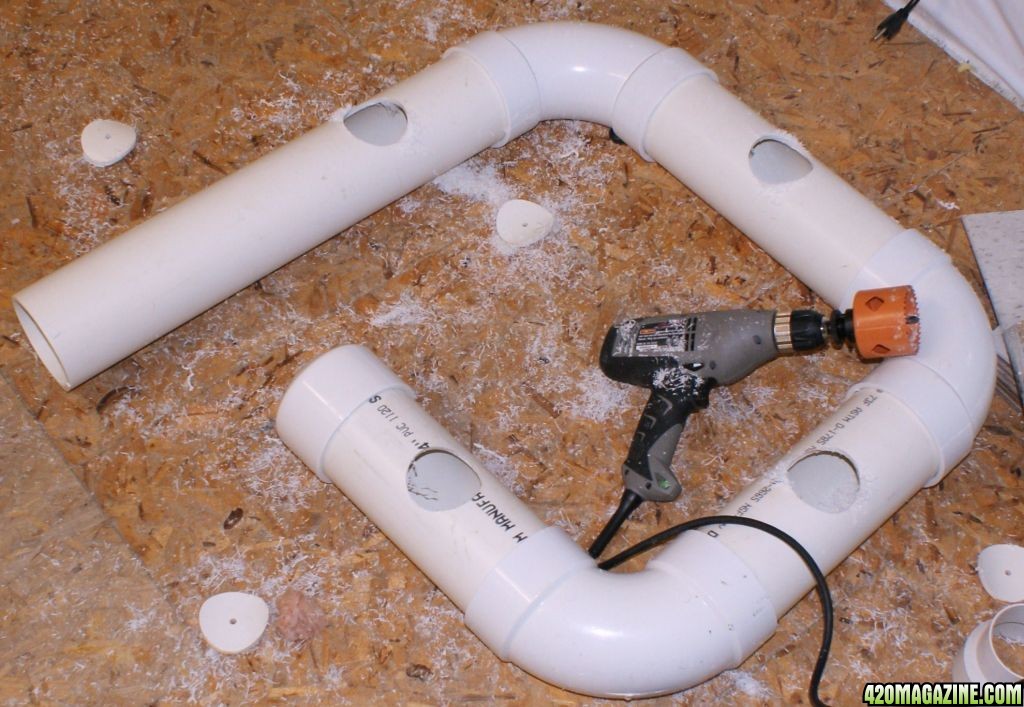
I built a wooden stand from scrap pieces of wood I had and supported the tube with pvc J hooks. On the cap side I drilled a hole in the cap installed a 1/2 in connector with a two part apoxy.
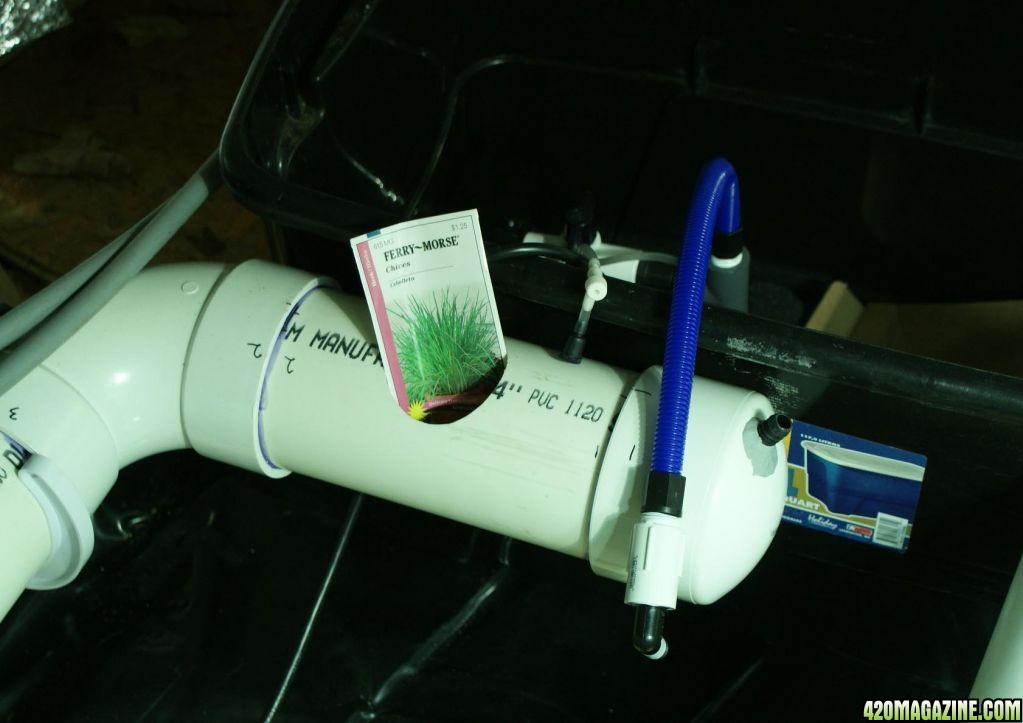
On the open end side of the tube I placed a 2inch plastic dam with a 2 part apoxy The apoxy set real fast and I ended up with a crooked dam. The red cap is a plastic plug I installed to help with waterchanges. I later found out that I didn't need it.
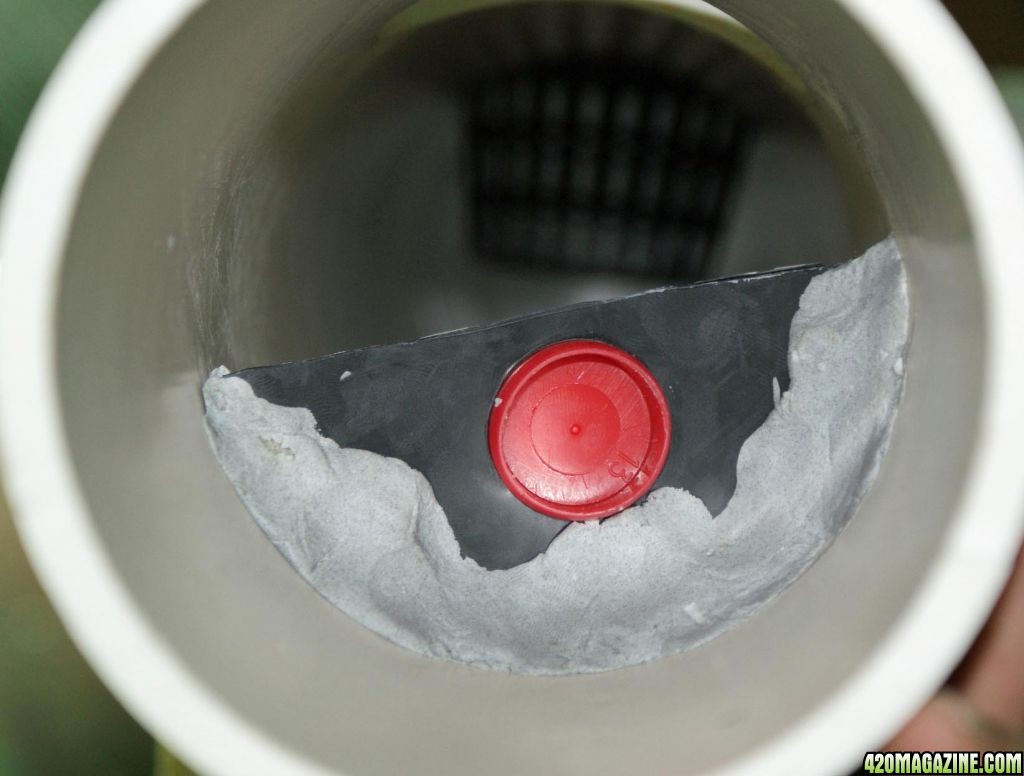
After cutting a 4 in hole in the side of a plastic tote I found a extra pump with my old aquarium stuff and desided to use it for the machine. Its a mag 250ghp pump. I then went to home depot and bought a assortment of connectors and tubing to connect the pump to the end of the tube with a bypass that poured right back into the resevoir. The bypass is to regulate flow and add more DO (disolved oxygen) into the water.
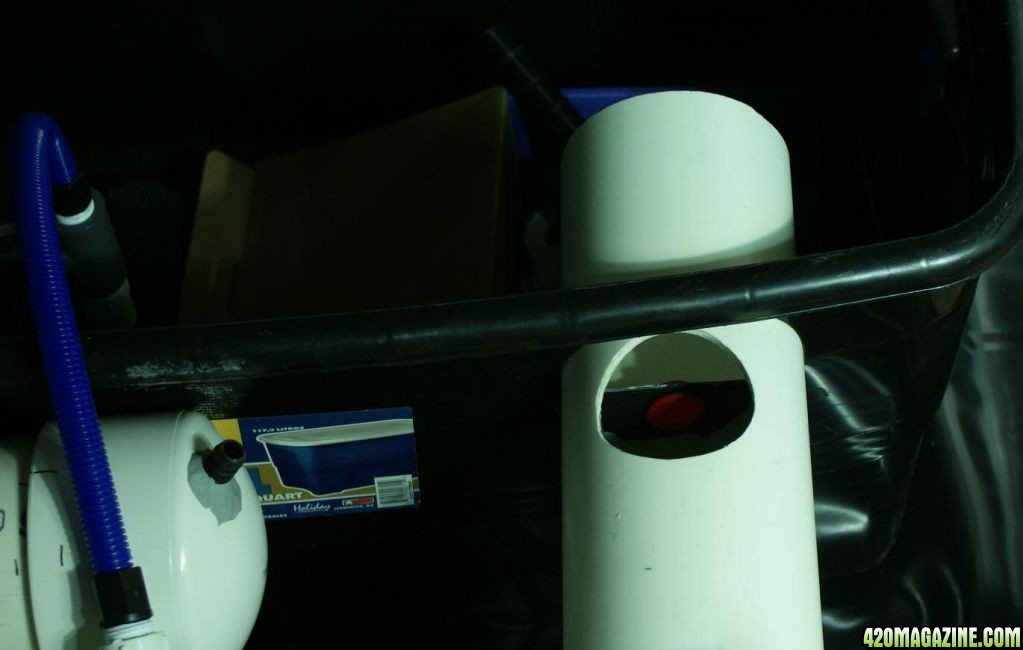
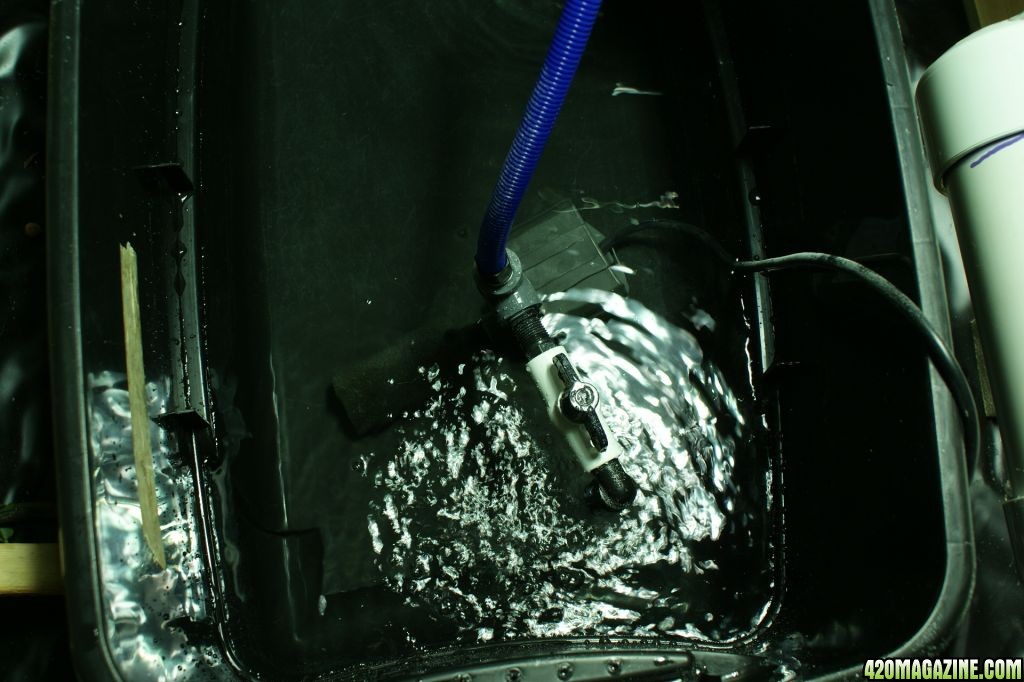
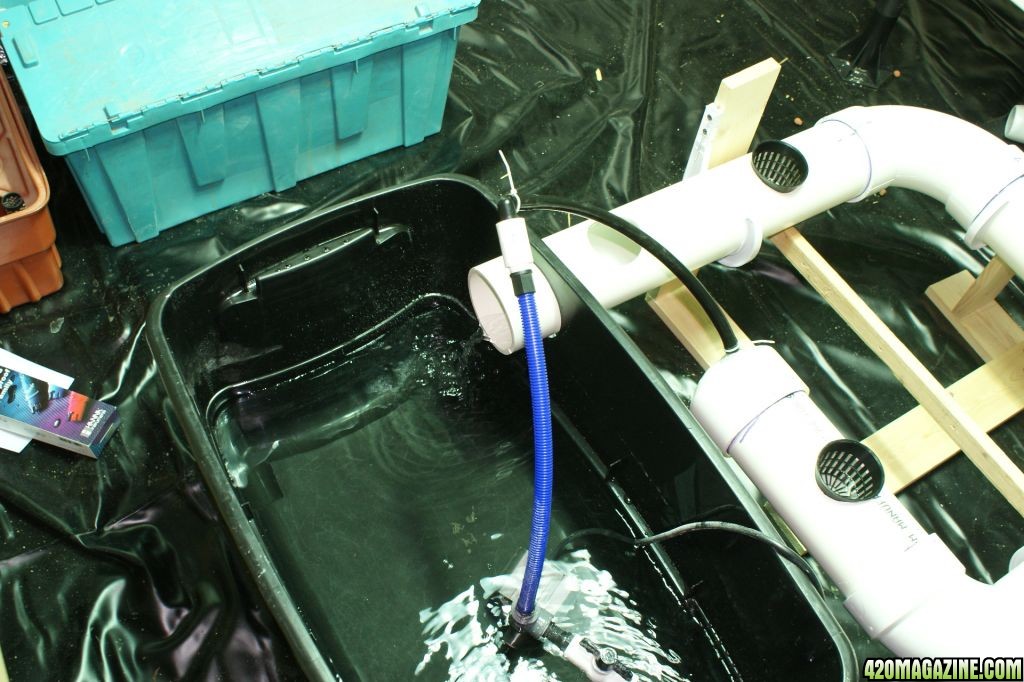
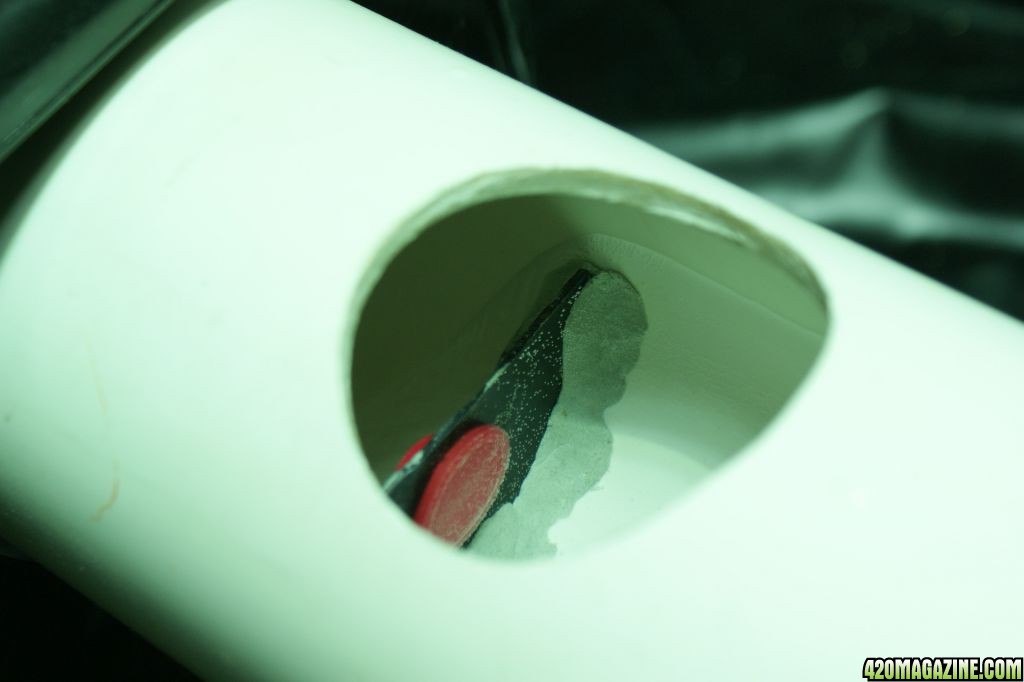
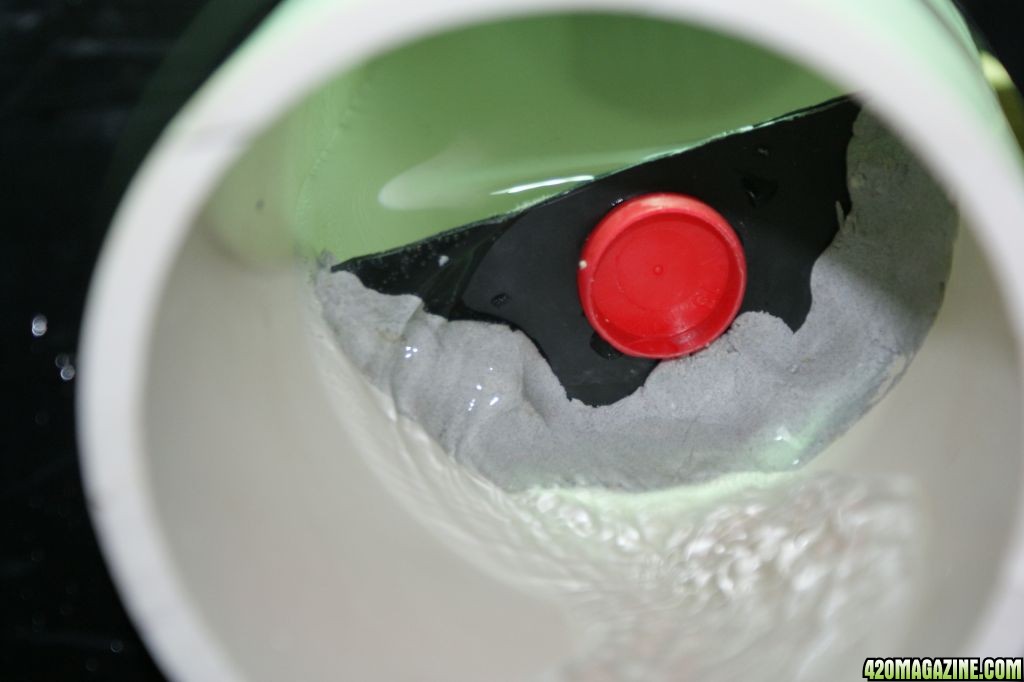
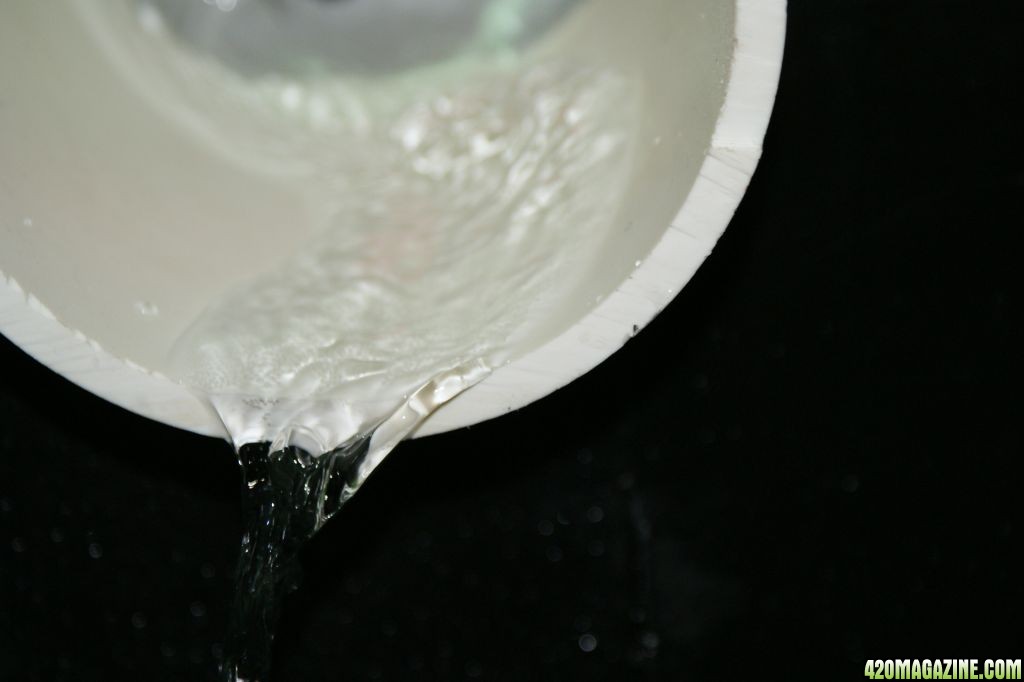
About 1/4 in of water is at the bottom of the cups.
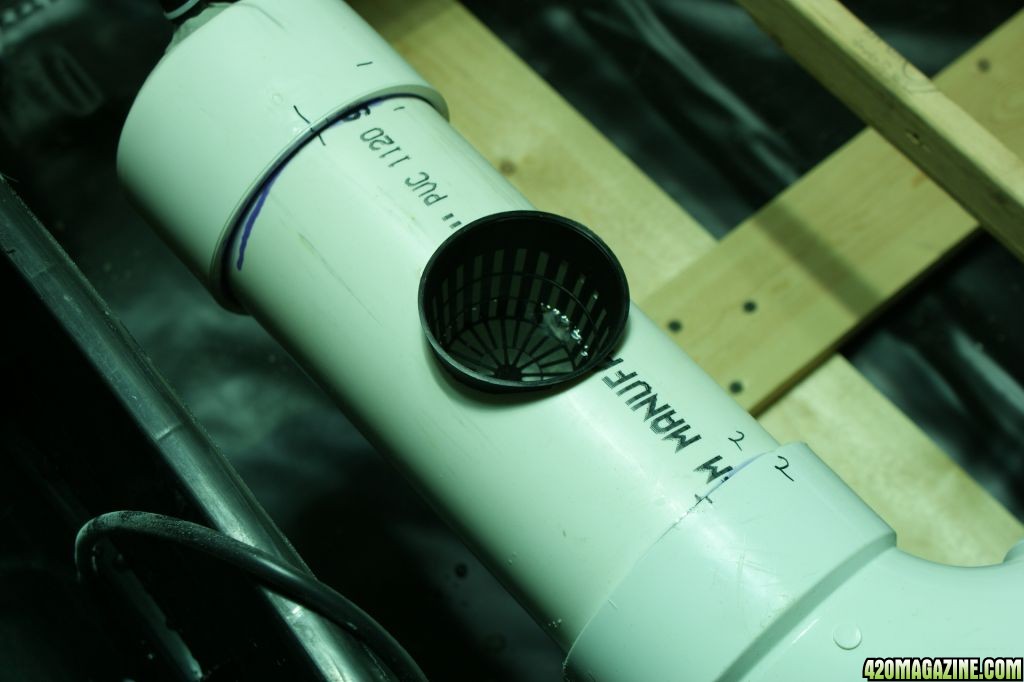
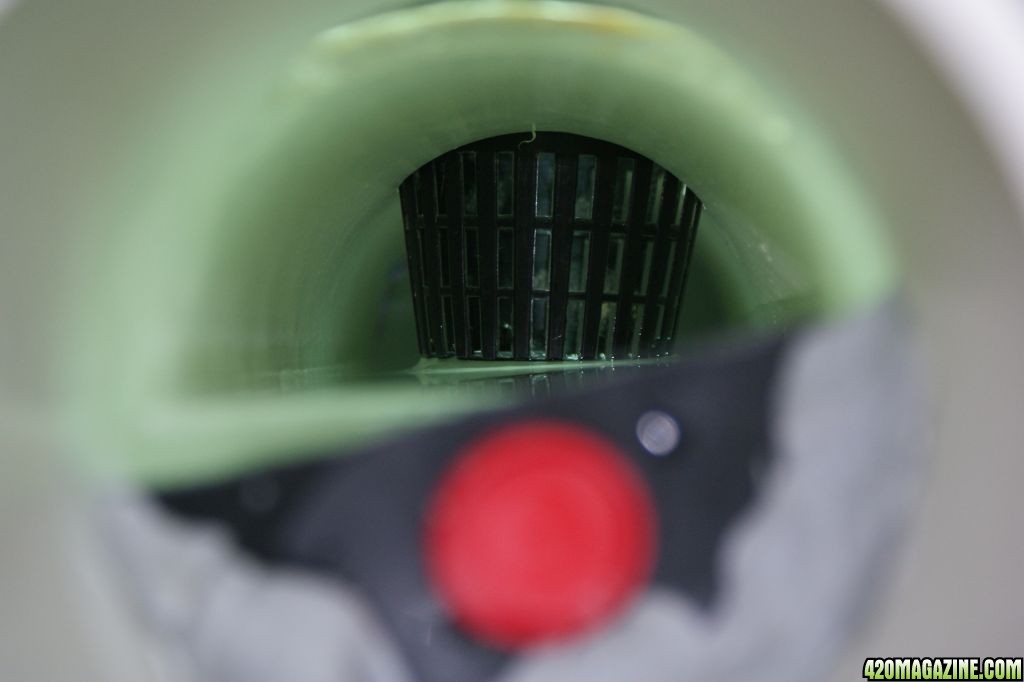
And thats my DIY. I never had a time or a place to test the machine until February.
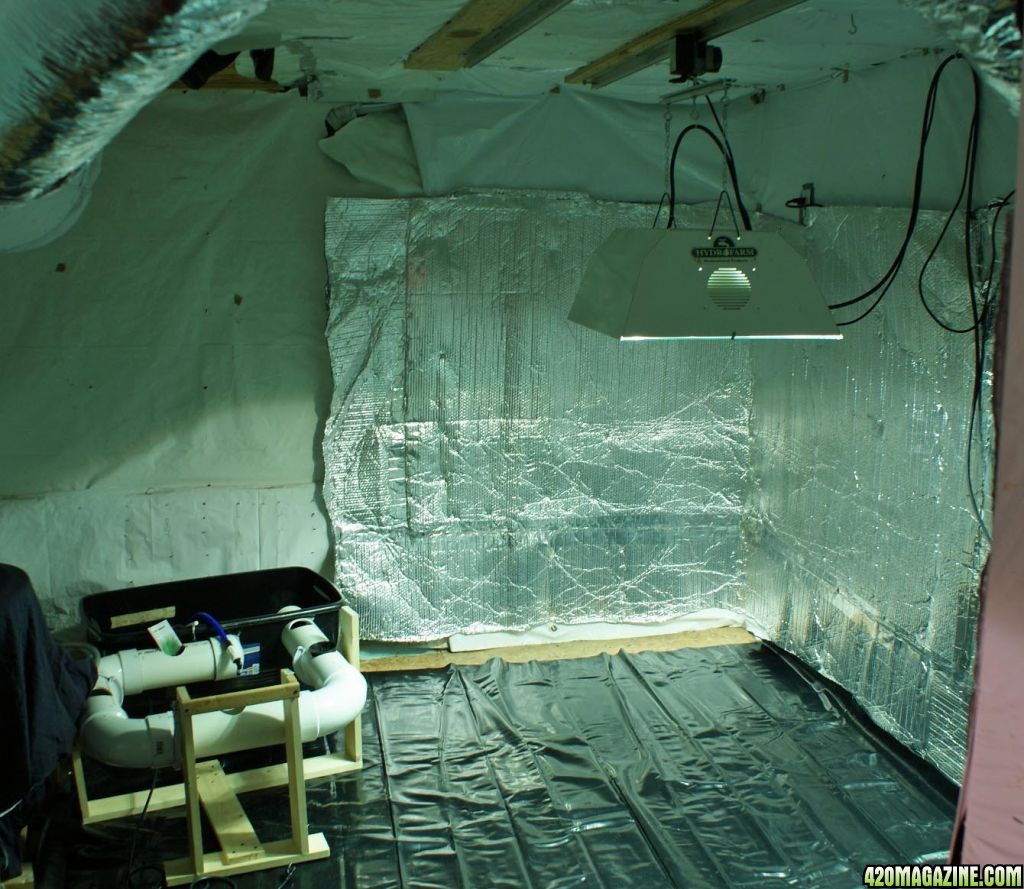
After watching a guy name Heath Robinson grow 40 oz plants and then grow a number of small clones using recirculating dwc methods I decided to build a very small machine to see if this method of growing suits me. So back in October of last year I put together a few pieces of 4 inch pvc tubes, 3 tubes are 12 inches long and the 4th is 24 inches long with 3 90 degree bends and capped one end. The size and shape of the machine doesn't matter as long as the tubes are level with each other. After the pvc was cemented together I drilled 4 holes with a 2 and3/4inch hole saw. I went with that size because I first tried a 3 inch hole saw and the fit for the 3 inch pot net seemed loose.
I built a wooden stand from scrap pieces of wood I had and supported the tube with pvc J hooks. On the cap side I drilled a hole in the cap installed a 1/2 in connector with a two part apoxy.

On the open end side of the tube I placed a 2inch plastic dam with a 2 part apoxy The apoxy set real fast and I ended up with a crooked dam. The red cap is a plastic plug I installed to help with waterchanges. I later found out that I didn't need it.

After cutting a 4 in hole in the side of a plastic tote I found a extra pump with my old aquarium stuff and desided to use it for the machine. Its a mag 250ghp pump. I then went to home depot and bought a assortment of connectors and tubing to connect the pump to the end of the tube with a bypass that poured right back into the resevoir. The bypass is to regulate flow and add more DO (disolved oxygen) into the water.

About 1/4 in of water is at the bottom of the cups.
And thats my DIY. I never had a time or a place to test the machine until February.





